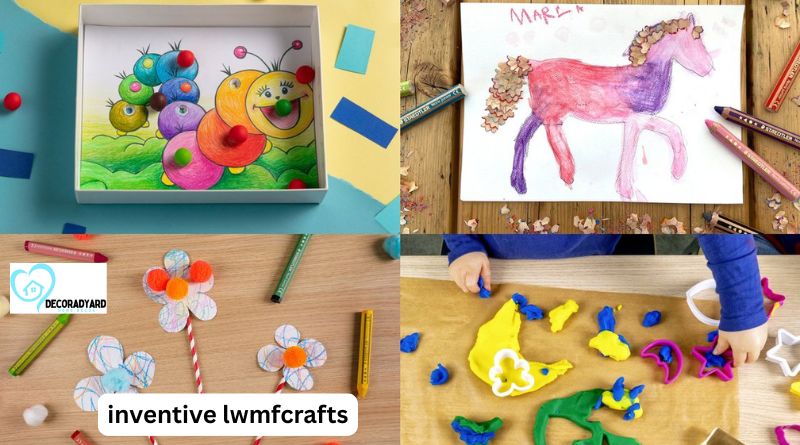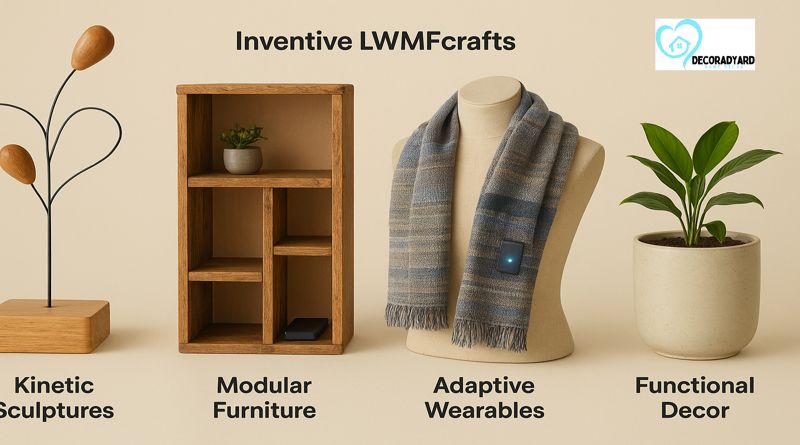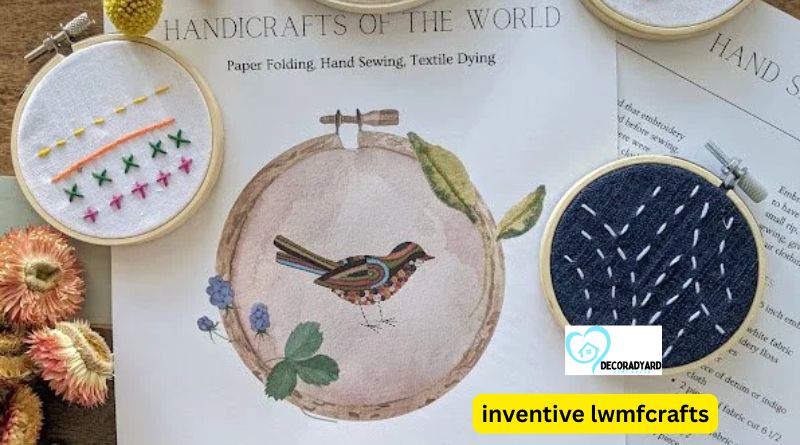In a world awash with mass-produced goods and quick fixes, the movement of inventive LWMFcrafts offers a breath of fresh air. Rooted in respect for heritage and driven by a spirit of experimentation, inventive LWMFcrafts invite us to reconsider how we make, how we use, and how we infuse creativity into the everyday. This article unpacks what makes inventive LWMFcrafts so compelling, highlights the principles behind it, and explores how anyone can engage with this evolving art form.
What Are Inventive LWMFcrafts?
At its core, inventive LWMFcrafts is not just a style of handiwork—it’s a philosophy. The acronym “LWMF” often evokes notions such as Legacy, Wonder, Modernity, and Form—suggesting a framework in which traditional craft, imaginative surprise, contemporary materials, and aesthetic function all intersect. As one article puts it, “Inventive lwmfcrafts are more than simple projects. They are a way of adding creativity, sustainability, and purpose into daily life.”

MyGardenandPatio
Unlike crafts that slavishly replicate older techniques, this movement sees old methods as springboards, not limits. A classic wood-joiner might incorporate hidden LED lighting; a weaver might integrate conductive threads so a textile responds to touch or temperature. The goal is to craft pieces that feel alive—objects that tell stories, serve functions, or evoke wonder.
The Four Pillars of the Movement
To understand inventive LWMFcrafts more deeply, we can look at the four guiding pillars that many practitioners embrace:
Legacy The movement honors traditional techniques—woodworking joinery, weaving, ceramics, embroidery, etc.—and treats them as foundations upon which to build new ideas. This continuity helps preserve craftsmanship even as the work evolves.
Wonder A signature of inventive LWMFcrafts is delight and surprise. Think kinetic elements, environment-responsive materials, or unexpected transformations. The idea is that the object isn’t passive but interacts in some way (visually, mechanically, or sensorily) with its surroundings or user.
Modernity This includes the use of new materials (e.g. bioresins, recycled polymers, conductive threads) and technologies (microcontrollers, sensors, 3D printing). These tools are employed not as gimmicks but to extend what craft can do.
Form Beauty, structural integrity, and functionality are not optional. Even with high concept ideas, a successful piece must be well composed, usable, and built to last. The marriage of form and purpose is central.
As one featured overview described: “This isn’t your grandmother’s needlepoint, unless she was stitching with conductive thread to create a light-up tapestry.”
Bilevel House
Why Inventive LWMFcrafts Matter Now
Personalization over Mass Production
In an era dominated by mass manufacturing, people increasingly yearn for items that feel unique. Inventive LWMFcrafts meet that need—each piece is often one-of-a-kind or customizable, carrying the fingerprint (literally and figuratively) of its maker.
Sustainability & Conscious Making
Many artisans in this movement prioritize repurposed, reclaimed, and eco-friendly materials. Instead of consuming more, they create value by transforming what already exists. This ethical stance resonates with growing global concern about waste, consumerism, and material footprints.
Empowering Creators
Because inventiveness is a core ethos, makers are encouraged to experiment, iterate, and learn. The movement blurs the line between hobbyist and technologist; you don’t need to start with deep engineering skills to try embedding sensors or LEDs into craft. The community often supports newcomers with tutorials, shared prototypes, and collaborative projects.
Examples & Ideas to Ignite Your Imagination
Here are a few conceptual and practical examples of inventive LWMFcrafts in action:

Illuminated Textile Art: A handwoven wall hanging that gently glows in low light, using conductive yarn connected to micro LEDs. As light changes, parts of the pattern emerge or fade.
Kinetic Sculptures: Small desktop sculptures that respond to air currents or subtle vibrations, moving parts in fluid, organic motion.
Modular Furniture: A shelf system carved from reclaimed wood, where pieces can be snapped together or rearranged, sometimes integrating wireless charging or cable-routing within.
Adaptive Wearables: Fabric accessories that shift color or texture in response to body heat or ambient temperature—e.g. a scarf that shifts tones as you move outdoors.
Functional Decor: Candle holders or planters made from glass or ceramics, but embedded with moisture sensors or light sensors so they softly react to changes in the environment.
The key is that these aren’t static “crafts”—they’re interactive, surprising, and built with intention.
How to Get Involved (Whether as Creator or Enthusiast)
For Makers:
Start small — pick a traditional technique you already enjoy and experiment with integrating a simple tech element (e.g. an LED or sensor).
Use beginner-friendly platforms like Arduino, Adafruit, or micro:bit to prototype small circuits.
Join maker spaces, craft collectives, or community workshops where tools (3D printers, laser cutters, textile equipment) are shared.
Document your process—even the failures are valuable. Sharing how you got from A to B builds community and inspires others.
For Collectors & Supporters:
Look for artisan markets, design fairs, or craft platforms advertising tech-integrated or “interactive” handmade goods.
Follow makers on social platforms (Instagram, Behance, craft forums) to see new projects and gain direct access to limited pieces.
Support educational programs in schools or community centers that fuse art and tech, to help future generations discover this approach.
Challenges & Considerations: Of course, blending craftsmanship and technology isn’t without hurdles:
Durability & Maintenance: Embedded electronics or moving parts require thoughtful protection and sometimes servicing.
Cost & Accessibility: The materials and tools needed can raise the entry barrier for less-resourced creators.
Complexity Balance: Too much tech can dilute the tactile, human element of craft; the best works weave the technology subtly, not overtly.
Yet many within the movement see these challenges not as roadblocks but as invitations to refine methods and push forward.
Looking Ahead: The Future of Inventive LWMFcrafts
The trajectory feels ripe with possibility. As microelectronics become ever smaller, cheaper, and more power-efficient, the kinds of interactions possible in handcrafted objects will expand dramatically. Imagine ceramic vessels that sense humidity and open vents, or textiles that help regulate body temperature—all built with human hands.
Moreover, as environmental awareness deepens, we might see biomaterials, compostable electronics, and new recycling models become common in this space. Craft, after all, has always been responsive to its time—and inventive LWMFcrafts seems to be tailor-made for our present moment.
In the end, what this movement offers is not just new objects, but a renewed relationship with what we make and what we hold. It reminds us that in a world of the disposable, there is still room—for things made slowly, thoughtfully, and with soul.



